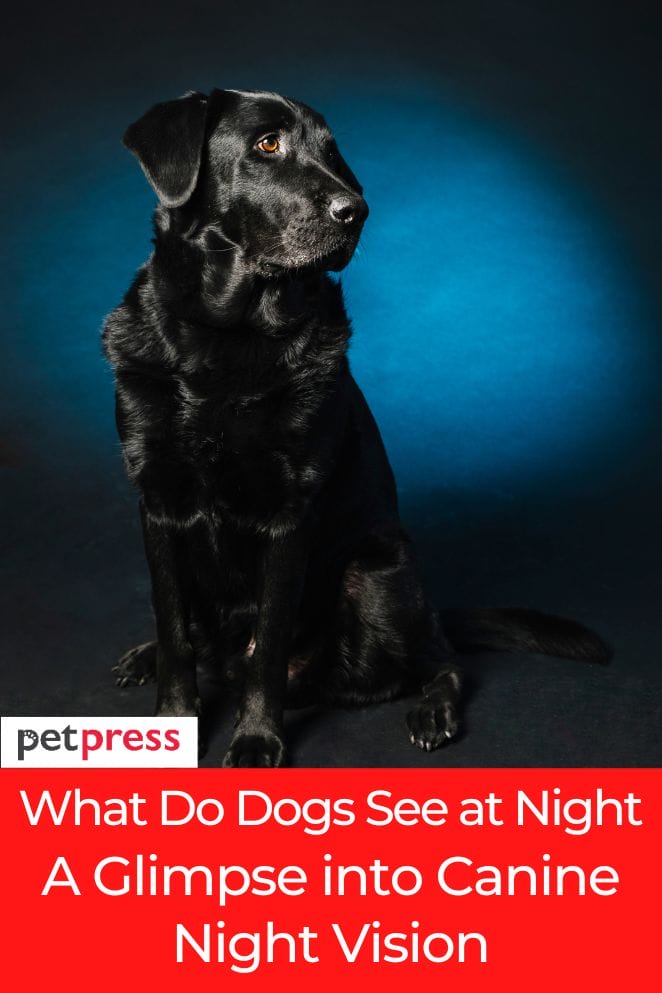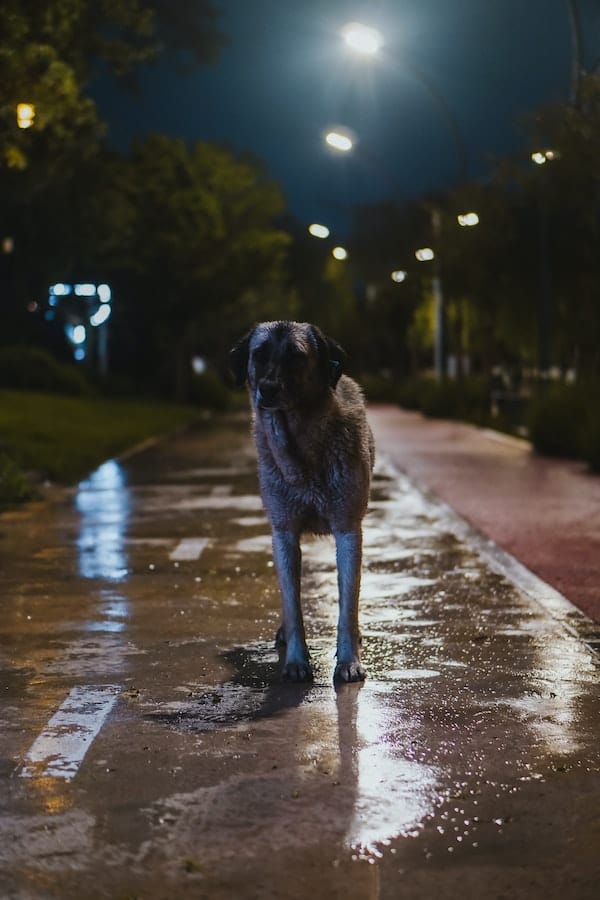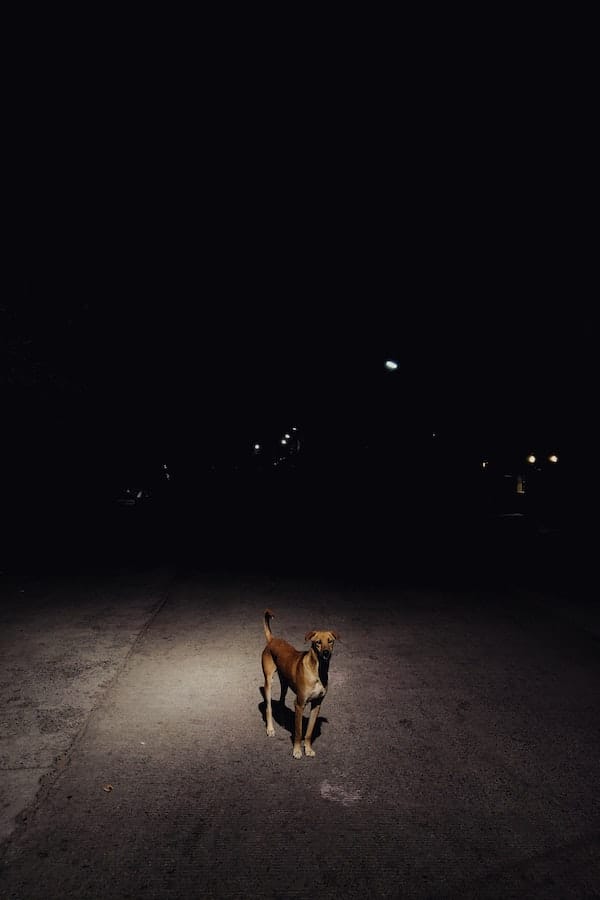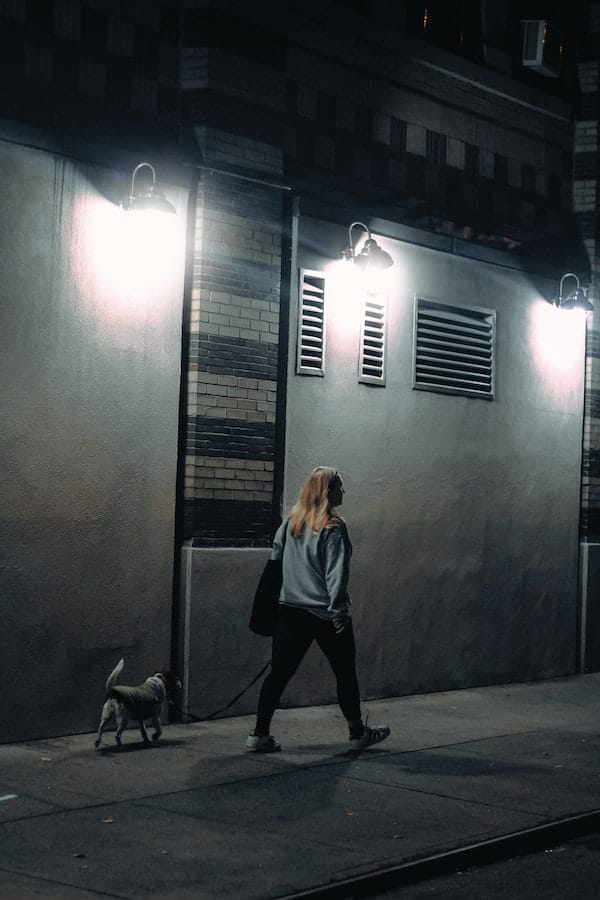
Amidst the descent of the sun beyond the horizon and the veil of darkness enshrouding the world, a wondrous metamorphosis unfolds within the eyes of our cherished canine companions.
Have you ever contemplated the vista that graces your furry confidant when the luminance recedes?
The world of dog night vision is a fascinating realm, unlocking secrets that reveal their unique perception of the nocturnal world.
Join us on a journey into the science behind dog night vision, exploring the colors, contrasts, and contours that come alive under the silvery glow of the moon.
The Science of Dog Night Vision
In the depths of the night, dogs unveil a remarkable ability to navigate their surroundings, thanks to a few remarkable adaptations:
Enhanced rods
Dogs boast an augmented density of rod cells within their retinas, in stark juxtaposition to human ocular anatomy.
This exquisite configuration not only amplifies their capacity to discern even the most nuanced luminous fluctuations but also affords them the capability to ascertain motion and unravel particulars that might elude human vision.
Tapetum lucidum
Dogs have a fascinating anatomical feature called the tapetum lucidum, a reflective layer in their eyes.
This remarkable structure acts like a built-in mirror, enhancing the luminance of their vision.
It allows them to see better in low-light conditions and gives them a distinct advantage when it comes to night vision.
This unique adaptation is just one of the many incredible traits that make dogs truly remarkable creatures.
Superior low-light vision
With their exceptional ability to perceive dim lighting, dogs become the vigilant sentinels of the night, relying on their six times better sensitivity than humans to detect even the faintest glimmers in the darkness.
Their keen senses and acute awareness make them invaluable guardians, ever watchful and ready to protect.

What Do Dogs See at Night?
Contrary to the popular notion of dogs seeing in black and white, their world is imbued with hues and shades:
Dynamic color sensitivity
Dogs, with their remarkable perceptual abilities, perceive the world as a vibrant symphony of colors.
Their heightened sensitivity allows them to discern subtle shades and nuances, particularly in the blue and yellow spectrum.
This unique visual perspective adds a captivating dimension to their experience of the surrounding environment.
Challenges with red and green
However, the resplendency that reds and greens afford to human sight might manifest as a dulcet serenade rather than a robust crescendo to dogs.
Their chromatic perception is dichotomized, a compositional interplay of cerulean and canary.
This deviation in chromatic perspective stems from their photoreceptor heterogeneity, divergent from the human constellation.
Hence, while the human realm basks in the kaleidoscope of hues, the canine perception constitutes an orchestration of tints, rendered alluring in its individualistic resonance.
Panoramic vision
Dogs, with their remarkable visual capabilities, possess a broader field of vision compared to humans.
This allows them to effortlessly absorb and embrace the enchanting tapestry of nocturnal sights that unfold before them.
From the twinkling stars that adorn the darkened sky to the mysterious shadows that dance in the moonlight, dogs have the privilege of experiencing a rich and vibrant world that is often hidden from our limited human perception.
Factors Affecting Canine Night Vision

The quality of a dog’s night vision is influenced by various factors:
Breed Variation
Different dog breeds exhibit varying levels of night vision prowess, which is influenced by their genetics and specific adaptations in their eyes.
These adaptations can include a higher concentration of rod cells, which are responsible for detecting low light levels, as well as a reflective layer behind the retina called the tapetum lucidum, which enhances their ability to see in the dark.
These unique features contribute to the fascinating diversity in dogs’ night vision capabilities.
Age and health
The passage of time and the mantle of well-being exert discernible influence upon the clarity of a dog’s nocturnal sight.
Analogous to their human counterparts, the vicissitudes of age can usher in the wane of visual acuity, impeding the lucidity of their nocturnal perception.
Furthermore, maladies such as cataracts or retinal disorders can further obfuscate their crepuscular vision.
In light of these dynamics, the vigilant guardian is enjoined to remain attuned to the chronicles of their furry confidants’ age and well-being, invariably pivotal to their experience of the nocturnal tapestry.
Ambient light
The ambient lighting conditions, such as the intensity and color temperature of natural light, as well as the presence of artificial light sources like lamps and fixtures, can significantly influence and shape an individual’s perception of their surroundings.
The Myth of Complete Darkness
While four-legged friends possess remarkable night vision, it’s important to note that their sight is not synonymous with complete clarity in utter darkness.
In fact, their vision is optimized for low-light conditions, allowing them to navigate and detect movement in dimly lit environments with astounding precision.
Their exceptional ability to see in the dark is attributed to specialized adaptations such as a higher number of rod cells in their eyes, an enhanced tapetum lucidum that reflects light back through the retina, and an increased sensitivity to motion.
These adaptations enable them to excel in low-light situations, making them the perfect companions for nighttime adventures and activities.

Conclusion
As twilight settles and the stars emerge, our dogs embark on a sensory adventure that unlocks a realm of colors, contrasts, and contours that remain hidden from our human eyes.
The science behind dog night vision offers a window into their unique perception, underscoring the beauty of their world under the enchanting cloak of night.
So, next time you gaze upon your furry companion under the moon’s soft glow, remember the wonders that dance within their eyes as they navigate the mysteries of the night.
FAQs
No, dogs require some ambient light to see clearly at night.
While dogs excel in low light conditions and motion detection, humans have a more detailed and colorful daytime vision.
The tapetum lucidum reflects light back through the retina, enhancing dogs’ low-light vision.
No, some breeds have better night vision due to the presence of the tapetum lucidum and other genetic factors.
While you can’t enhance their night vision, you can improve their comfort and safety during nighttime activities.


GIPHY App Key not set. Please check settings